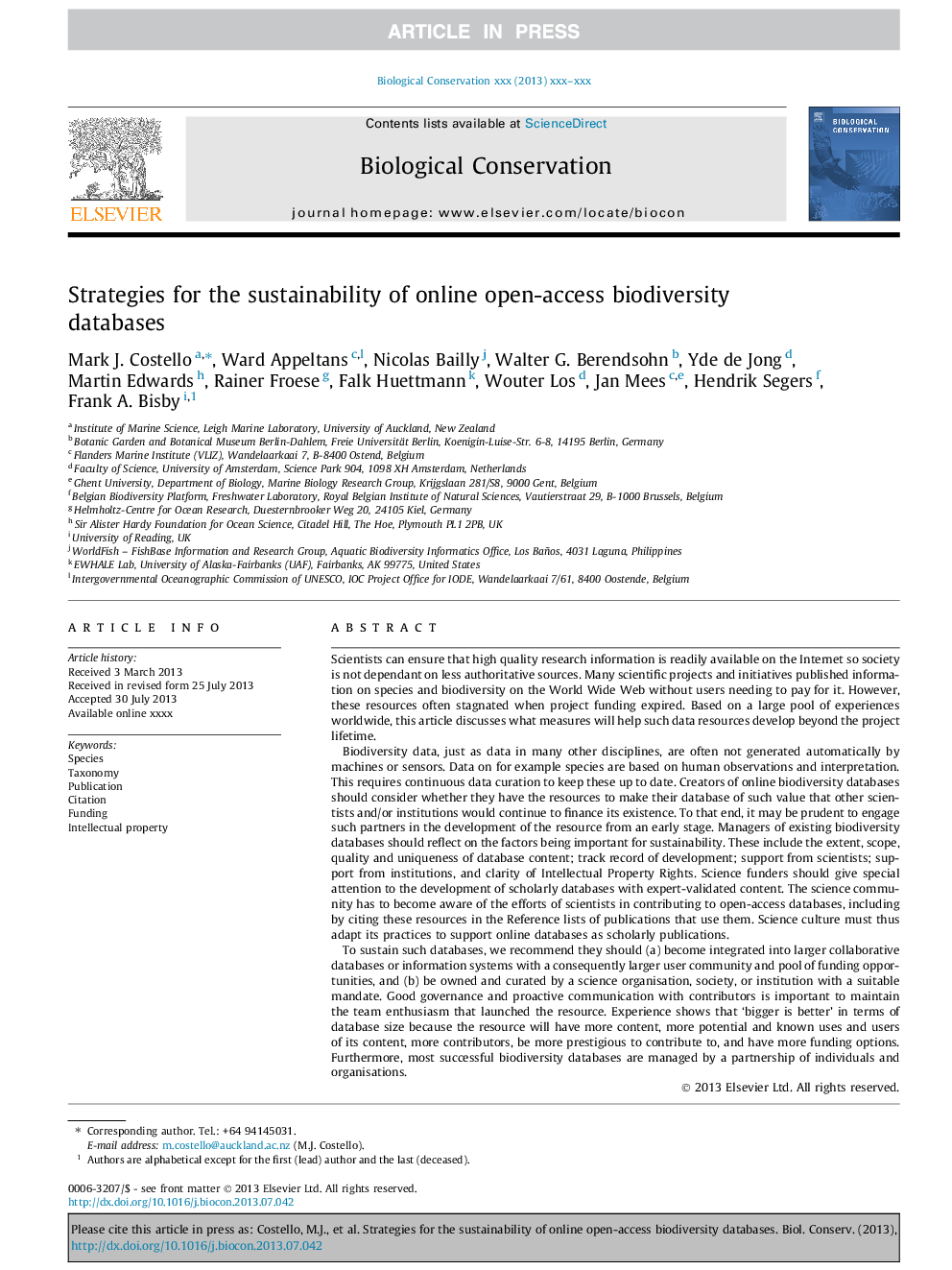| Article ID | Journal | Published Year | Pages | File Type |
|---|---|---|---|---|
| 6299572 | Biological Conservation | 2014 | 11 Pages |
Abstract
To sustain such databases, we recommend they should (a) become integrated into larger collaborative databases or information systems with a consequently larger user community and pool of funding opportunities, and (b) be owned and curated by a science organisation, society, or institution with a suitable mandate. Good governance and proactive communication with contributors is important to maintain the team enthusiasm that launched the resource. Experience shows that 'bigger is better' in terms of database size because the resource will have more content, more potential and known uses and users of its content, more contributors, be more prestigious to contribute to, and have more funding options. Furthermore, most successful biodiversity databases are managed by a partnership of individuals and organisations.
Related Topics
Life Sciences
Agricultural and Biological Sciences
Ecology, Evolution, Behavior and Systematics
Authors
Mark J. Costello, Ward Appeltans, Nicolas Bailly, Walter G. Berendsohn, Yde de Jong, Martin Edwards, Rainer Froese, Falk Huettmann, Wouter Los, Jan Mees, Hendrik Segers, Frank A. Bisby,
